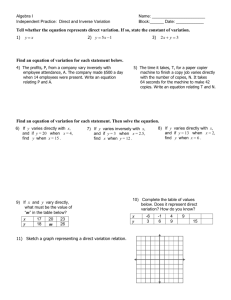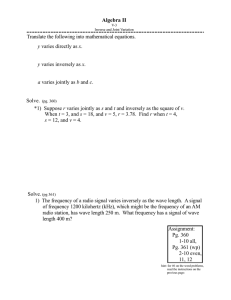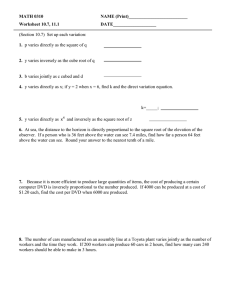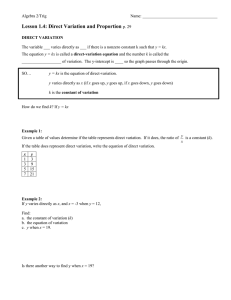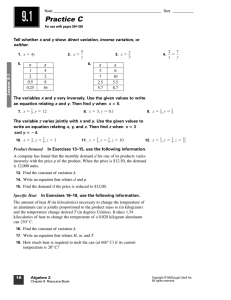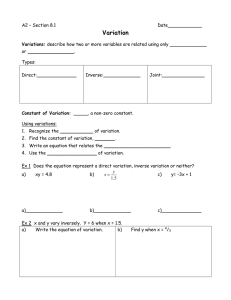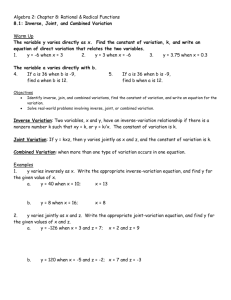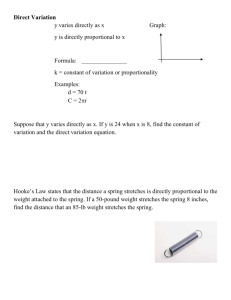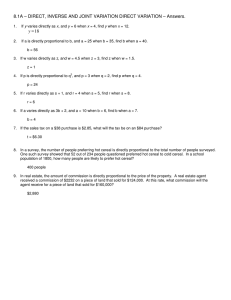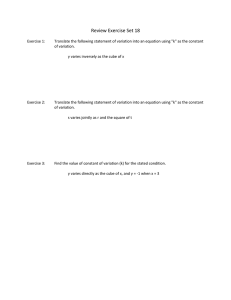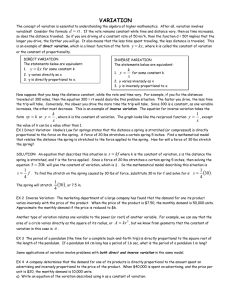Direct, Inverse, Joint Variation Explained
advertisement
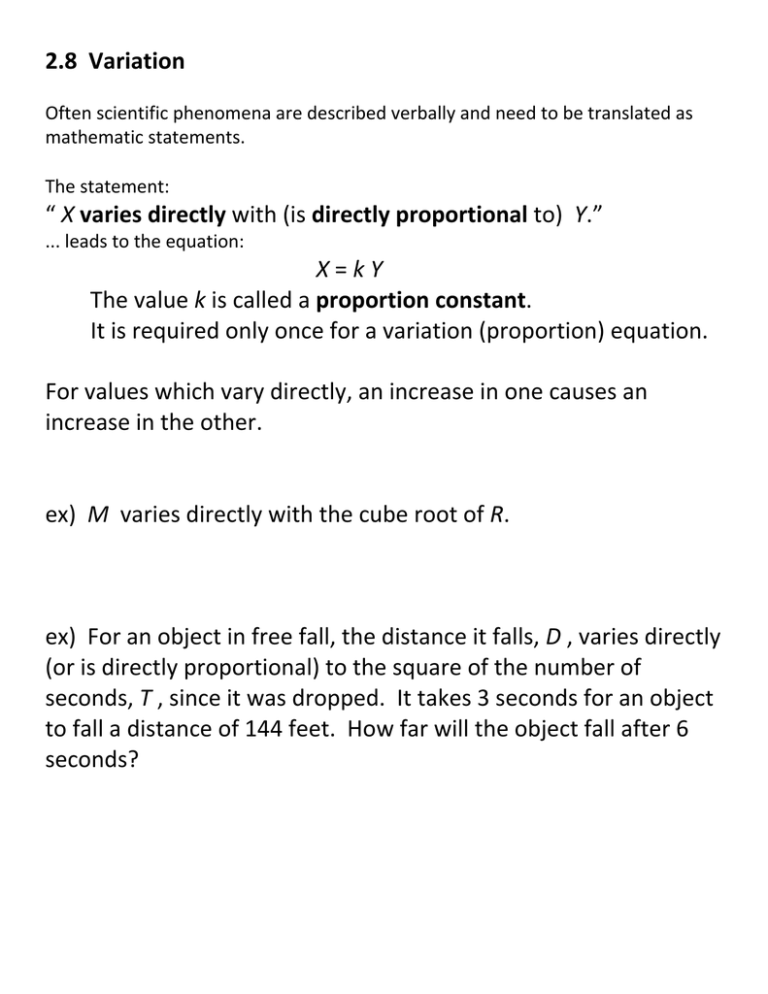
2.8 Variation Often scientific phenomena are described verbally and need to be translated as mathematic statements. The statement: “ X varies directly with (is directly proportional to) Y.” ... leads to the equation: X=kY The value k is called a proportion constant. It is required only once for a variation (proportion) equation. For values which vary directly, an increase in one causes an increase in the other. ex) M varies directly with the cube root of R. ex) For an object in free fall, the distance it falls, D , varies directly (or is directly proportional) to the square of the number of seconds, T , since it was dropped. It takes 3 seconds for an object to fall a distance of 144 feet. How far will the object fall after 6 seconds? X varies inversely with (is inversely proportional to) Y. k X= Y For values which vary inversely, an increase in one causes a decrease in the other. ex) F varies inversely with the fifth power of P. ex) In kick boxing, the force, F , needed to break a board varies inversely with the length, L , of the board. If it takes 5 lbs of pressure to break a board 2 feet long, how much force is needed to break a board 6 feet long? X varies jointly with (is jointly proportional to) Y and Z. X = kYZ No matter how many variables are used after the proportion statement, you only need to use one value of k for the equation. ex) H varies jointly with W and the square of Z and varies inversely with the cube of M. H = 20 when W = 6, Z = 2 and M = 3. H = ? when W = 2, Z = 1 and M = 4.
